10 Top Rated Attractions in Padua
Discover the 10 top-rated attractions in Padua, best restaurants where to eat local food and outdoor activities you can do in this gorgeous city!
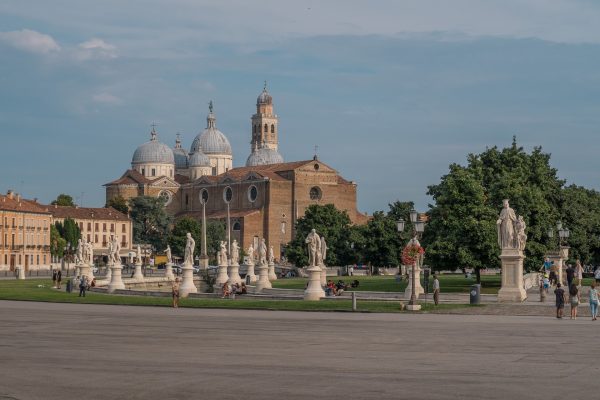
Situated in Veneto region, just 30 mins away from beautiful Venice and 2 hours from Milan, Padua will amaze you with its cozy bars and restaurants where to eat great traditional food along with a wide range of local wines – don’t forget we’re in the land of Spritz and Prosecco!
In Padua a lot of great Renaissance artists of the caliber of Giotto, who painted the Scrovegni Chapel frescoes, left their mark: Donatello, Filippo Lippi, Paolo Uccello and Piero della Francesca are among them.
For this reason, Padua has been internationally recognized as a city to preserve, where stunning frescoes await for you to come and be mesmerized by their beauty.
Enough with the talk, let’s explore Padua together!
Unmissable 10 top-rated attractions in padua
1. Basilica Of Saint Anthony Of Padua
The Basilica of Saint Anthony of Padua is surely one of the top rated attractions in Padua, enticing millions of visitors every year.
New entry in the Unesco World Heritage List (2021), this beautiful Catholic church hosts famous St Anthony’s relics, one of the reasons why pilgrims from all over the world come here to pay a visit.
Saint Anthony of Padua, to whom the basilica was dedicated, was actually born in Lisbon, Portugal, but died in Padua in 1231. Nowadays the cathedral is still considered one of the world’s most important art treasures.
If you’re wondering why, here is the answer.

Even though the name of the architect is still unknown, well renowned are the following artworks inside the basilica:
- the Chapel of Saint Anthony: splendid Renaissance work showing scenes and miracles from the life of Saint Anthony, probably created by Tullio Lombardo.
- The Chapel of the Relics: dating back to the 17th century, it shows a sumptuous Baroque style that followed the plan of sculptor-architect Filippo Parodi. In the three niches reliquaries, chalices, ex voto objects, and other precious objects are kept, but most importantly, the Incorrupt Tongue of St. Anthony is visible in the central niche.
- The Presbytery and Main Altar: the artworks that stand out here are most certainly Donatello’s masterpieces and Crucifix (1446), the fresco of St. Anthony Giving a Blessing (1326) by a master of the Giotto school and the pictorial decorations of the sides and of the vaults of the presbytery and the apse.
The entrance is free. If you’re interested in visiting the museums visit the official website here.
2. The Scrovegni Chapel
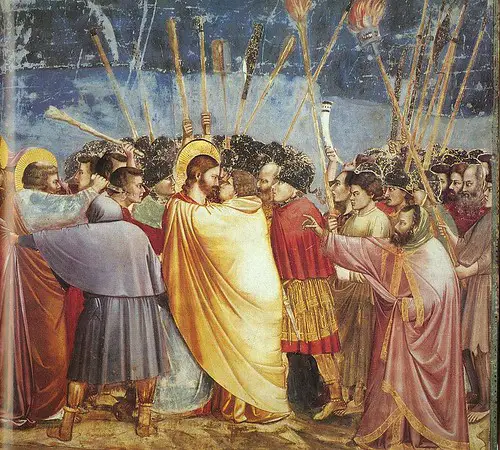
In Italy there are gems scattered all over the peninsula, churches and chapels being among them. Of course, you already know the Sistine Chapel, a jewel of Italian art. However, it’s not the only one. The Scrovegni Chapel is something you must see in Padua.
The Scrovegni Chapel was frescoed by Giotto (1303-1305), upon the commission of Enrico degli Scrovegni, a banker, politician and patron of Padua in the 14th century.
The Chapel is one of the most important masterpieces of Western art. Its frescoes, narrating the Virgin Mary and Christ’s life events, cover the entire walls.
What’s most astonishing, I find, is the grandeur of the Universal Judgement, ending the story of human salvation. Interesting enough, if you take a close look you’ll be able to see some of the Popes of that time depicted in Hell!
Did you know..?
The Chapel’s frescoes are part of Padua’s 14th-century fresco cycles, now included in the Unesco World Heritage List as Padova Urbs Picta. These fresco cycles gave birth to a new image of the city at that time.
The fresco cycles are housed in eight complexes of buildings within the old city centre of Padua.
These frescoes are so meaningful to the Italian history of art as they illustrate how new important stylistic developments were introduced by different artists, Giotto among them.
“The innovation marks a new era in the history of art, producing an irreversible change in direction.”
The 8 complexes are grouped into 4 parts:
- The Scrovegni Chapel and the Eremitani’s Church;
- Palazzo della Ragione, the Chapel of Carraresi Palace, Padua Baptistery (the baptistery of the cathedral, see point 8);
- Cittadella Antoniana, which includes the complex of buildings associated with the Basilica of St. Anthony;
- San Michele Oratory.
The Scrovegni Chapel Tickets and Info
Before your visit you can store your belongings in the locker room – you’ll find it along your way to the Chapel – for free.
The visit lasts 30 mins of which about 10 mins are dedicated to watching an explanatory video on the realization of the Chapel.
After the video you are allowed to enter the Scrovegni Chapel (pics are permitted, but not videos) and stay inside until the siren rings. That means the time of your visit is over and you’re invited to exit.
The full ticket costs € 10 per person but discounted prices are available.
Tickets are not refundable and reservation is mandatory. On-line reservations must be made at least 24 hours in advance. You can’t book your tickets on the very same day of your visit, so plan accordingly.
Find more info on the Scrovegni Chapel official website.
My insider tips:
If you’re planning to visit various museums in Padua (you’ll find all the info about the museums below), purchase the Padova Card. It allows you to save up by getting some discounted tickets for the main museums. Check out the official website here.
3. Eremitani Civic Museums
If you’re planning to visit the Scrovegni Chapel on a day from Tuesday to Sunday, you can purchase a combined ticket (the full ticket is €14/person) to visit boh the chapel and the Eremitani Civic Museums.
In the museums you’ll get to learn more on Giotto Scrovegni Chapel frescoes through seven multimedia workstations.
Also, you will find a lot of 16th-century artworks by great Italian artists such as Veronese, Boccacini and Tintoretto. In the archeological section of the museum you’ll see important local discoveries from the paleolithic and roman era.
Last but not least, Giotto’s crucifix, dating back to the 14th century and once placed above the altar in the Scrovegni Chapel, is now kept here.
All info on the Eremitani Museums official website.
4. Prato della Valle
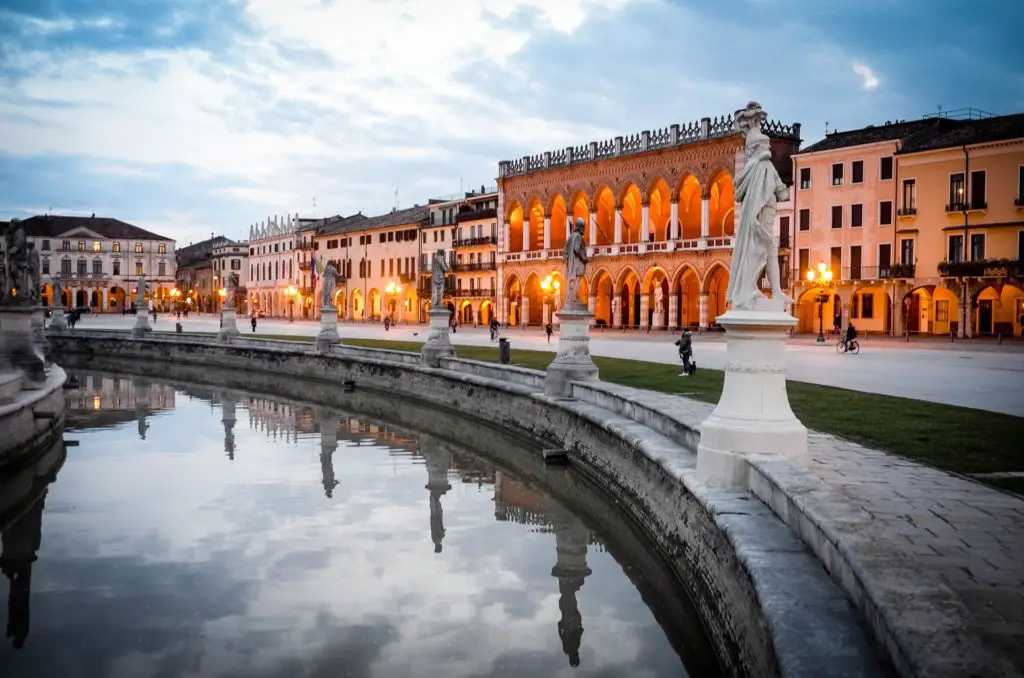
What’s the 5th largest square in Europe? Prato della Valle in Padua.
Prato della Valle is a large square in Padua hosting 78 statues (originally 88) of male personalities– with the exception of one woman, Gaspara Stampa – somehow linked to the city history.
The square is the perfect setting for occasions like festivals and important football matches, but also outdoor activities and competitions. In fact, it’s served as an ice skating rink several times.
On one side of the square you can see the Basilica of Saint Giustina, where you can even rent a room! More info on the official website.
5. University of Padua: Bo Palace and Anatomical Theater
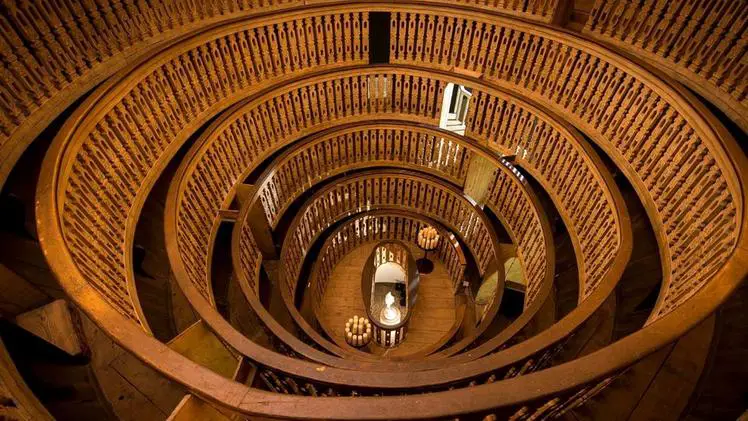
Padua is known all over the world for one of the oldest universities in the world: the University of Padua was erected in 1222, after a group of students and professors had migrated here from the University of Bologna.
Between 1592 and 1610 Galileo Galilei taught in this prestigious university, leaving a mark on the Paduan academic world.
The University of Padua is hosted in Bo Palace, the historical seat since 1493. The building also hosts the oldest anatomical theatre in the world.
Completed in 1595, the theatre is the first example in history of a permanent place created for the very purpose of studying anatomy through cadaver dissection.
The only option you have to visit the Palace is to book a guided tour.
6. University of Padua Botanical Garden
One of the best outdoor activities to do in Padua is visiting the University of Padua Botanical Garden, especially in spring and summer where colors are just awesome.
Created in 1545 by the Benedictine monks, Padua Botanical Garden is the oldest botanical garden in the world. Since 1997 it has been part of the UNESCO World Heritage List as a property of great cultural importance.
Nowadays, it hosts 3’500 different species, of which 1’300 are part of the biodiversity garden project. In this area of the garden you will find a range of different climates and their vegetation, from tropical to sub-humid, from temperate to arid areas.
Interested in visiting the Botanical Garden? Visit the official website for more info on times and tickets.
7. Piazza dei Signori
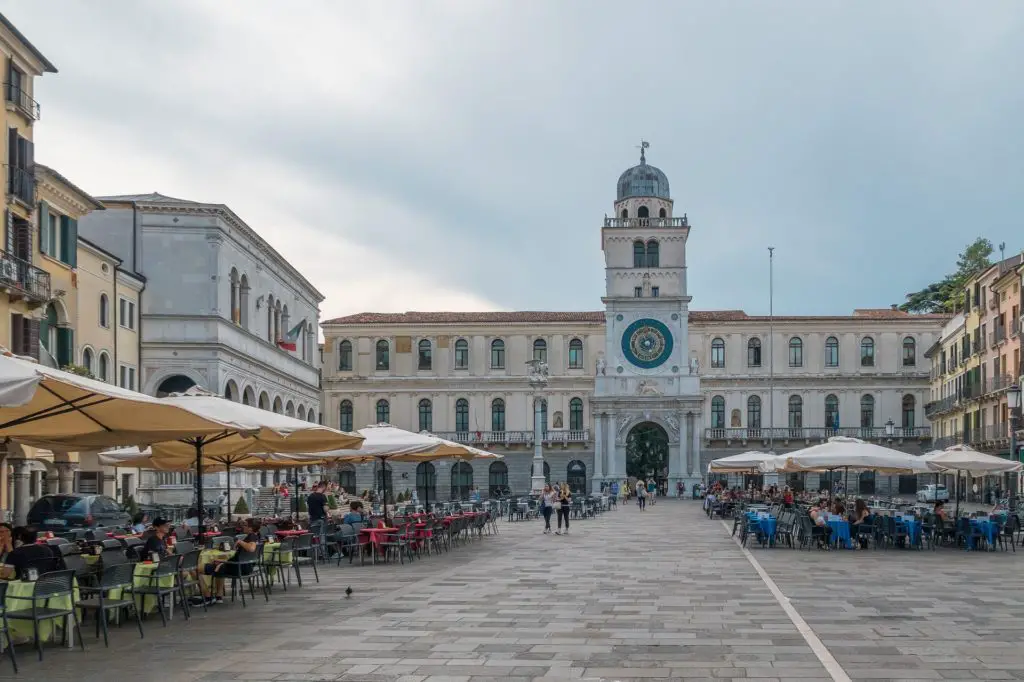
One of the squares of Padua historical center is Piazza dei Signori, together with Piazza delle Erbe and Piazza della Frutta.
Over the centuries Piazza dei Signori served as a place for the citizens to gather and celebrate festivities. Nowadays it’s a very lively square where young people gather to have drinks with their friends.
It’s particularly packed on weekend’s nights when crowds of young people enjoy their glass of Spritz, Negroni or wine. Certainly a thing to do in Padua by night!
The astronomical clock on the Clock Tower is the oldest in the world, where all the signs of the Zodiac but the Libra are present.
8. Padua Cathedral and Baptistery
Padua Cathedral, which is not to be confused with the Basilica of Saint Anthony of Padua, and the baptistery – on the right – are situated in Piazza Duomo, adjacent to the Bishop’s palace.
The cathedral (in Italian known as Duomo di Padova or Basilica Cattedrale di Santa Maria Assunta) was first built in the 4th century, undergoing several major reconstructions through centuries.
As mentioned above (see point 1), the Baptistery’s frescoes are part of Padua’s 14th-century fresco cycles (Padova Urbs Picta). Interested in a visit? You can find more info, times and tickets on the official website here.
My insider tips:
With as little as € 6,00 per person you can get to see the Baptistery, the Bishop Palace and the Diocesan Museum. The combined ticket can be purchased here.
9. Caffé Pedrocchi

Right in front of Padua University is Caffé Pedrocchi. Antonio Pedrocchi established this international café in Padua in 1831, when noblemen and middle-class people gathered to discuss politics and economics.
In fact, this was the place where intellectuals had meetings, balls and feasts were organized and sometimes even deals were signed. Among the famous guests of the café were Stendhal, who wrote about this Neoclassical café in “La Certosa di Parma”, Théophile Gauthier, Gabriele d’Annunzio, Eleonora Duse, Filippo Tommaso Marinetti and many others.
Even the menù reflects its history: a delicious dessert mentioned by Sendhal in his work is “zabaione” (eggnog), is still made. Why don’t you take a break and so here to try it?
10. Padua Best Places to Eat
For sure, one of the top rated attractions in Padua is food.
If you’re wondering what food Padua is known for, you must know that this city has a long culinary tradition based on bigoli, a type of pasta, duck and hen.
Here you are some traditional dishes you must try in Padua and best places to eat.
1. Bacaro Padovano
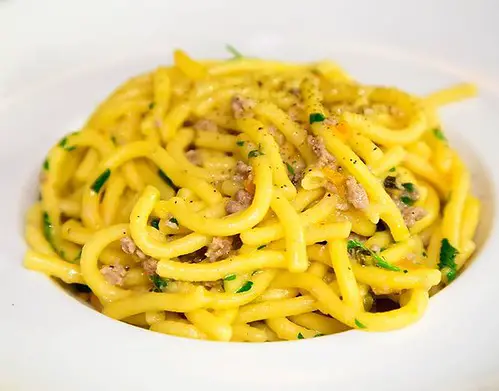
Close to the main attractions (near the Diocesan Museum), Bacaro Padovano is cozy and nicely decorated. As it’s often busy, give a call to book a table, especially on the weekend and during national holidays. I was there for All Saints and was lucky to get a table for two!
Here you can get to try different local dishes:
- Bigoli with duck: this long shaped type of pasta similar to spaghetti was born in Padua in 1604 and is now spread all over Veneto region and in some parts of Lombardy. The duck sauce (ragù d’anatra) is with no tomato and..delicious!
- “Gallina imbriàga” with polenta: hen cooked in local Colli Euganei red wine, typical of Padua.
- “Figassa padovana” with a glass of sweet passito Recioto di Soave: as crumbly as the sbrisolona cake from Mantua, figassa is a cake made of figues. Together with Recioto, it is just the perfect way to end a meal.
Vegetarian and vegan options are available here.
2. Bacareto di via San Pietro
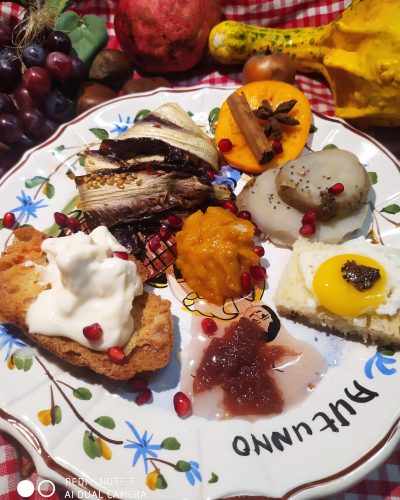
In Bacareto di Via San Pietro, an informal and convivial bar and restaurant, you can get to experience the true Venetian aperitivo: a glass of Spritz or Prosecco accompanying a wide range of cicchetti, Venetian-style finger food.
Among them is the famous Sarde in Saor, a typical dish of the Veneto region consisting of marinated sardines, onions and raisins.
Vegetarian options are available.
3. La Folperia

If you love fish, La Folperia is the right place for you. Actually, it’s the stand for you: you can find it in Piazza della Frutta offering folpi (or “folpetti” as they say), the local name for octopus, maruzzelle and bovoletti (sea snails and land snails), baccalà (codfish), mazenette (crab) and much more! Ideal for a quick but savory lunch to enjoy in the open air.
Padua is most certainly worth a visit: don’t miss the chance to visit this vibrant and fascinating city rich in places with great artistic and historical importance!
Thanks for reading this article! Hope you’ll find it useful for your trip to Italy 🙂
